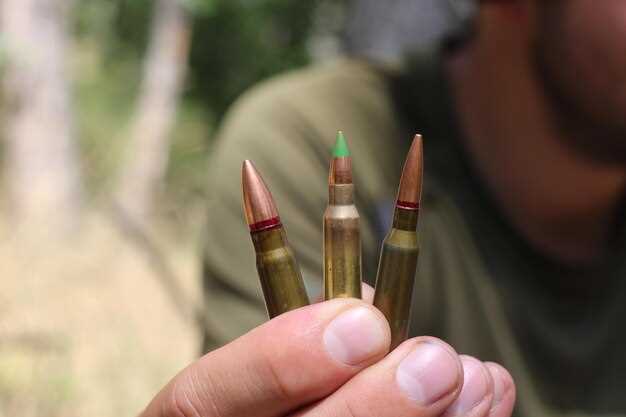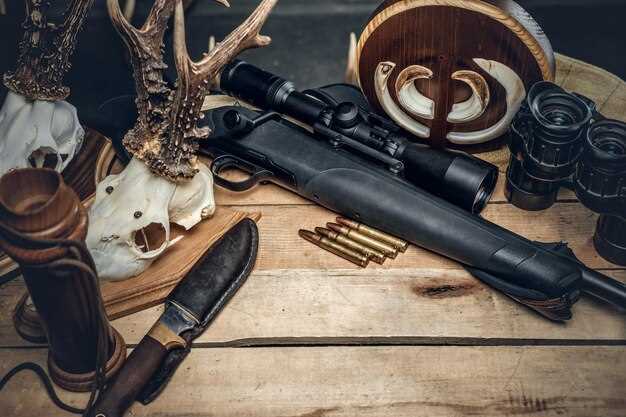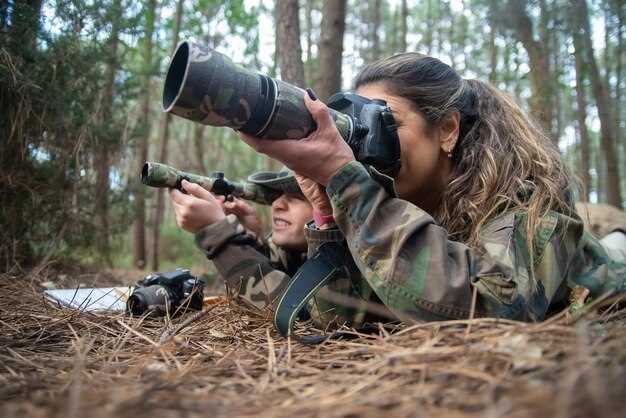Choosing the Right Ammunition for Your Hunt

Choosing the right ammunition for hunting is crucial for both ethical considerations and hunting success. Each hunting scenario calls for different requirements based on the game species, terrain, and specific shooting distances. Understanding the nuances of caliber selection and the characteristics of various ammunition types can significantly impact your performance in the field.
When selecting ammunition, one must first consider the caliber that corresponds to the game being hunted. Different calibers possess unique traits, including energy transfer, bullet weight, and trajectory. For instance, larger game animals typically require higher caliber ammunition to ensure a quick and humane kill, while smaller game may be effectively hunted using smaller caliber rounds.
Additionally, the type of bullet used–whether it’s soft point, full metal jacket, or hollow point–can affect the way the bullet performs upon impact. Each of these types serves specific purposes, and understanding these differences will help hunters make informed decisions when selecting ammunition. Ultimately, the right combination of caliber and bullet type will enhance your accuracy and overall hunting experience.
Understanding Caliber Choices for Different Game

Choosing the right caliber for hunting is crucial for both ethical and effective game harvesting. Different types of game require specific ammunition calibers to ensure humane and successful kills. Understanding these distinctions can vastly improve your hunting experience.
For small game, such as rabbits and squirrels, a .22 caliber rifle is a popular choice. This caliber provides sufficient power to take down smaller animals without excessive damage to the meat. It is also lightweight and offers minimal recoil, making it ideal for hunters who require precision in close-range shooting.
For medium-sized game, such as deer, calibers ranging from .243 Win to .30-06 Springfield are commonly used. The .243 Win is effective for smaller deer and offers greater accuracy at longer distances, while the .30-06 Springfield provides more stopping power, making it suitable for larger deer and even elk. The selection between these calibers often depends on the hunter’s experience and the hunting environment.
When targeting large game, such as moose or bear, larger calibers like .300 Win Mag or .338 Win Mag are recommended. These calibers deliver high energy and penetration necessary to effectively take down larger and tougher animals. Additionally, the increased recoil and muzzle rise should be considered, as it demands a more skilled shooter to maintain accuracy under pressure.
In addition to size, the type of terrain and hunting conditions play a significant role in caliber choice. Dense woods may require a caliber that performs well at short range, while open fields may allow for higher caliber choices with flatter trajectories. Hunters must also consider the bullet type, as expanding bullets are generally preferred for maximizing energy transfer and ensuring quick kills.
Ultimately, understanding the relationship between caliber and game size can guide hunters in making informed decisions about their ammo. Taking the time to match caliber with both the target species and the hunting situation enhances effectiveness and promotes responsible hunting practices.
Evaluating Bullet Types and Their Impact
When selecting ammunition for hunting, understanding the different bullet types is essential. Bullets vary significantly in their design, construction, and performance characteristics, all of which can impact your hunting success. A critical factor to consider is caliber. This measurement indicates the diameter of the bullet, directly affecting its capabilities.
Full Metal Jacket (FMJ) bullets are commonly used for target practice due to their cost-effectiveness and penetration. However, they are not ideal for hunting, as they may pass through the game without delivering sufficient energy, resulting in poor terminal performance. Conversely, soft-point bullets are designed for expansion upon impact, making them more suitable for hunting. They create larger wound channels and transfer more energy to the target, increasing the likelihood of a humane kill.
For big game hunting, using bonded or controlled-expansion bullets is often recommended. These bullets maintain their weight and integrity upon expansion, ensuring maximum penetration and effectiveness in delivering a lethal blow. Such designs are especially important for larger animals, where deep penetration is necessary to reach vital organs.
Another aspect of bullet selection is the material composition, which can influence performance. Lead bullets are traditional but have environmental concerns associated with lead poisoning. Copper bullets are gaining popularity as they provide similar performance with less environmental impact. They are designed to expand effectively while retaining weight, ensuring better performance in the field.
The velocity at which a bullet travels is also important. A higher velocity typically results in flatter trajectories and less drop over distance, allowing for more precise shots. However, this can also lead to increased recoil, which may affect accuracy for some shooters. Understanding the balance between speed and recoil is crucial when choosing ammunition.
Ultimately, the best ammunition for your hunting needs depends on the game you are pursuing, the distances you expect to shoot, and your firearm’s caliber. Evaluating the various bullet types will help you make an informed decision that enhances your hunting experience and improves your chances of success in the field.
Matching Ammunition with Your Firearm for Optimal Performance

Choosing the right ammo is crucial for maximizing performance in the field. The first step is understanding the caliber of your firearm, as each caliber is designed to fire specific types of ammunition. Mismatching ammunition can lead to poor accuracy, increased recoil, or even dangerous malfunctions.
When selecting ammo, consider the game you are hunting and the effective range of your firearm. Different calibers perform uniquely depending on their design and grain weight. For instance, lighter bullets may offer higher velocities and flatter trajectories, making them suitable for smaller game at longer distances, whereas heavier bullets provide better energy transfer for larger animals at shorter ranges.
It’s also important to account for the type of action your firearm utilizes–bolt-action, semi-automatic, or lever-action–as this can influence how certain ammunition behaves. Some firearms function better with specific brands or types of ammo, so testing various options at the range can help determine which performs best in your firearm.
Additionally, consider the purpose of your hunt. For target shooting, precision is key, so match-grade ammunition may be advantageous. Conversely, for hunting, reliable expansion and penetration are vital; therefore, looking for ammunition designed for particular game species is recommended.
Ultimately, always refer to your firearm’s manufacturer specifications when selecting ammo. This ensures compatibility and safety, allowing you to get the most out of your hunting experience.

